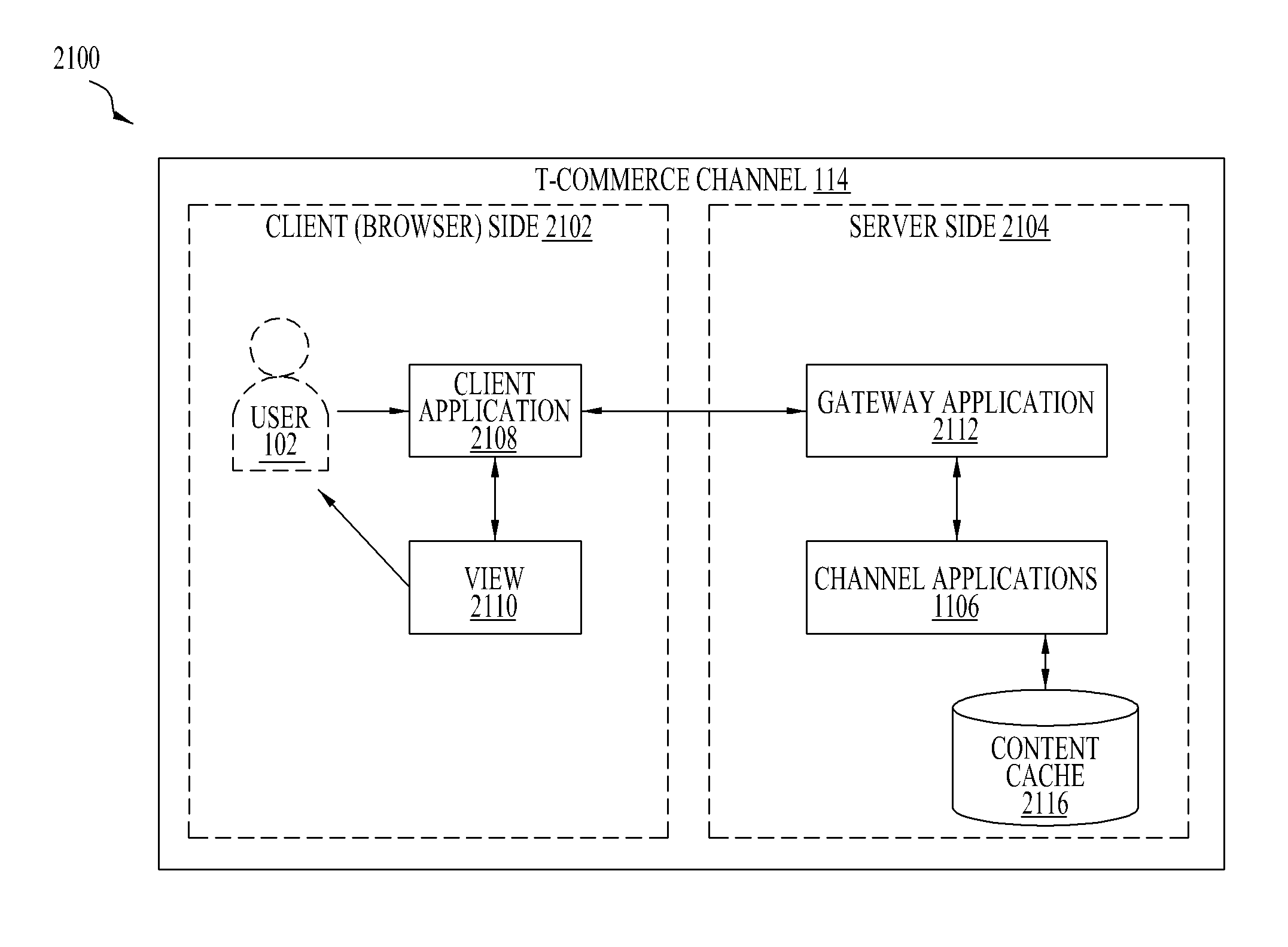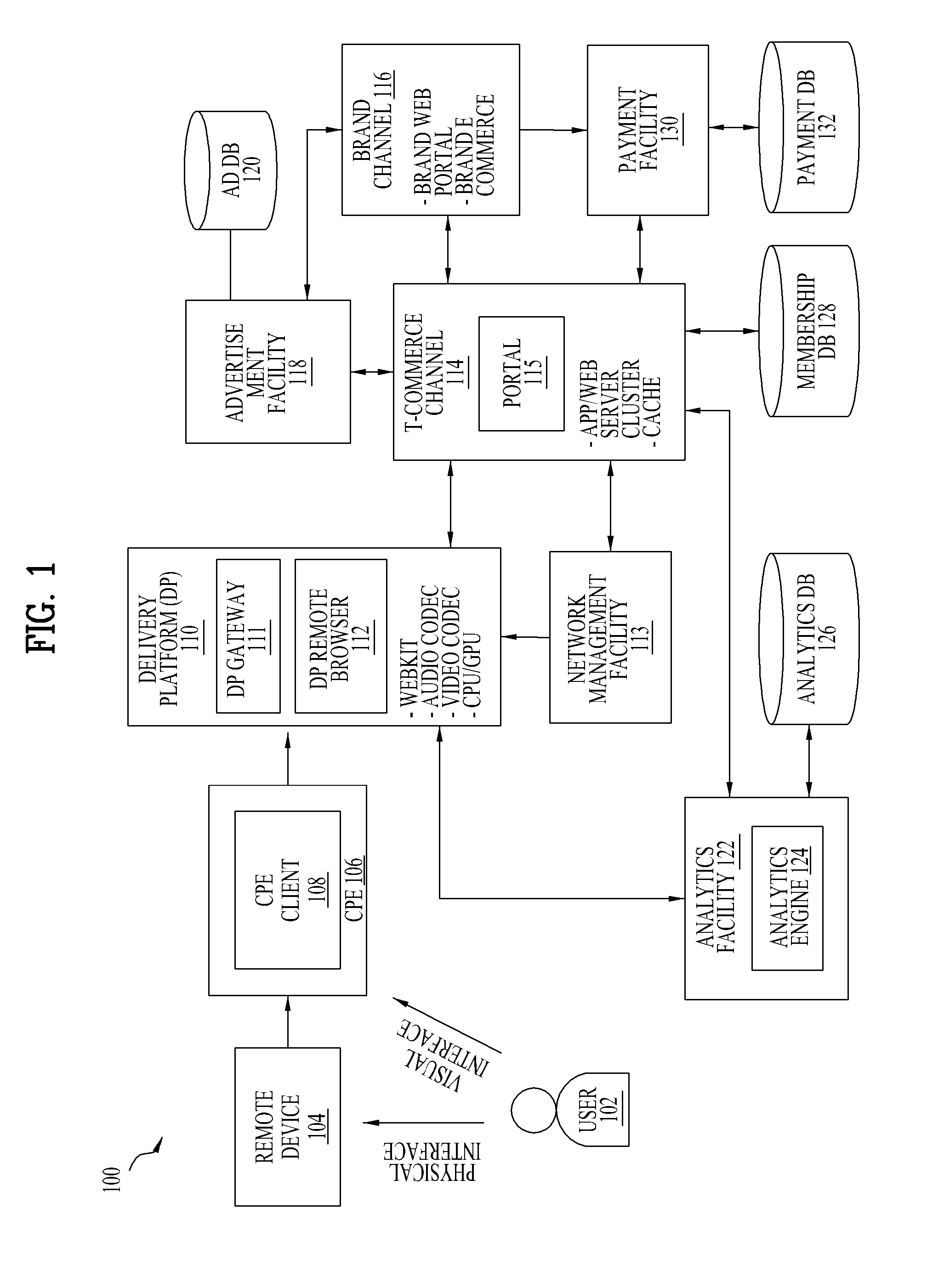Apparatus and method for processing a multimedia commerce service
a multimedia commerce and applicability technology, applied in the field of multimedia commerce delivery, can solve the problems of limited processing power in a mobile device, significant limitations of mobile devices, and limited screen and keyboard capabilities, and achieve the effects of ample processing capacity, memory and cache, and extreme video and audio performan
- Summary
- Abstract
- Description
- Claims
- Application Information
AI Technical Summary
Benefits of technology
Problems solved by technology
Method used
Image
Examples
Embodiment Construction
[0092]The present disclosure presents embodiments for a T-commerce system, a cloud-based system adapted for the presentation of multi-media e-commerce through an Internet-connected television-based customer premise equipment (CPE), such as a smart TV, Blu-Ray player, digital media streaming device, and the like. The T-commerce system may provide brand web content to users through their CPE, where the brand web content is provided through a multi-channel offering environment (e.g., a T-commerce channel layered over brand channels). Although the term ‘commerce’ is utilized herein in the description of the T-commerce system, commerce may include not only the presentation of goods and services for sale, but for marketing, social exchange, entertainment, education, and the like. For instance, the T-commerce system may provide a brand channel for a manufacturer of shoes for the presentation and sale of their products. However, the T-commerce system may also provide for a manufacturer to m...
PUM
 Login to View More
Login to View More Abstract
Description
Claims
Application Information
 Login to View More
Login to View More - R&D
- Intellectual Property
- Life Sciences
- Materials
- Tech Scout
- Unparalleled Data Quality
- Higher Quality Content
- 60% Fewer Hallucinations
Browse by: Latest US Patents, China's latest patents, Technical Efficacy Thesaurus, Application Domain, Technology Topic, Popular Technical Reports.
© 2025 PatSnap. All rights reserved.Legal|Privacy policy|Modern Slavery Act Transparency Statement|Sitemap|About US| Contact US: help@patsnap.com



